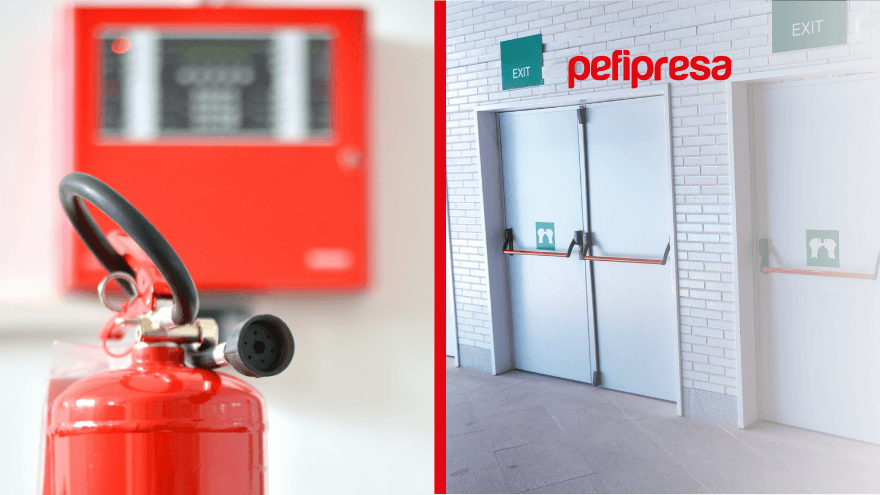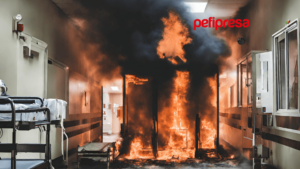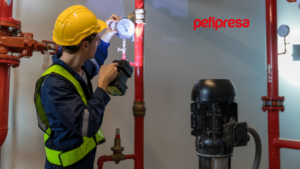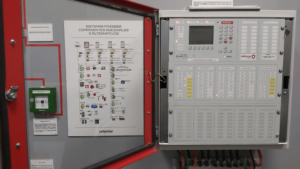A fire protection plan is integrated into a security plan for a building or enclosure. Passive protection and active fire protection elements are included in the fire protection plan, both of which are necessary for a safe protection system. But, in addition, an emergency evacuation plan must be designed that anticipates possible risks that may occur.
In this article we are going to explain the difference between passive fire protection and active fire protection.
In the first case, we have elements within the system that, in the event of a fire, prevent it from spreading. However, when we speak of an active fire protection system, we refer to the set of elements that collaborate in the detection, control, extinction of the fire and alert for evacuation.

Active fire protection
We refer to active fire protection as the set of elements and equipment that are installed to avoid or prevent the spread of the fire, also warning of it. In this way it is possible to keep the situation under control and avoid material and human damage, detecting and extinguishing the fire.
Active fire protection warns of a fire and acts to prevent its spread. The performance of these systems can be both manual and automatic.
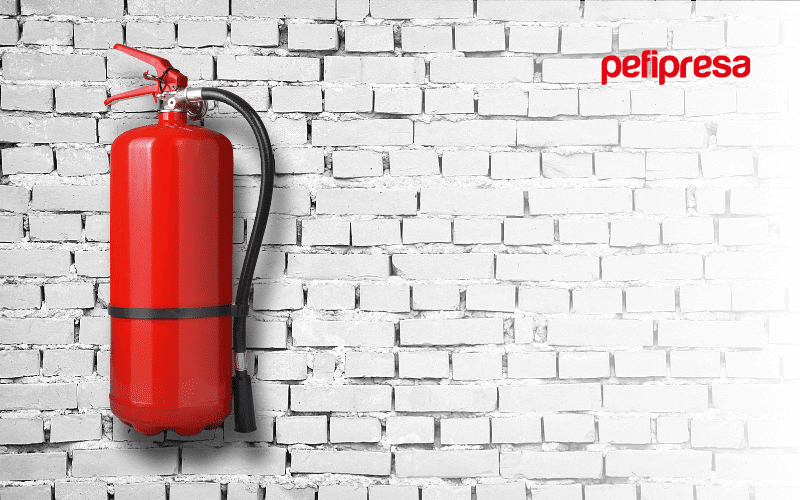
What elements make up an active fire protection team?
Active fire protection equipment is made up of the following systems:
- Fire detection and alarm systems .
- Fire-fighting water supply systems.
- Fire hydrant system .
- Fire extinguishers .
- Equipped fire hydrant systems
- Dry column systems
- Fixed extinguishing systems by automatic sprinklers and water spray .
- Fixed water mist extinguishing systems
- Fixed physical foam extinguishing systems .
- Fixed extinguishing systems for gaseous agents .
- Smoke and heat control systems .
Passive fire protection
Passive protection against fires has a preventive role and aims both to prevent the start of a fire and to attenuate or lessen the consequences of a fire by confining the fire in the space in which it originates for a period of time. determined by compartmentalization.
In this way, the evacuation of people is facilitated or allowed, at least until the emergency services can act, if necessary and always in accordance with the regulations applicable to each type of building. They do not require human intervention, hence it is called passive.

Functions of passive fire protection
- Avoid the spread of flames and smoke.
- Contain thermal effects.
- Maintain the fire stability of structural elements.
In this type of fire protection, 2 categories are established:
- Structural protection: Includes those solutions to guarantee the fire resistance of structural elements.
- Compartmentalization: Block access areas or passageways to where the fire originated.
The elements included in the passive protection against fire must comply with the different regulations in force, as well as pass test tests carried out in specific laboratories on reaction, resistance and luminescence. Some of these elements are:
- Fire doors.
- Light warning signs.
- Structural Protection
- Compartmentalization
- Facility sealing

At Pefipresa, company specializing in fire protection systems, we design and install customized solutions, optimizing time and costs. In addition, our high technical knowledge of installation start-up and maintenance work (preventive and corrective) always guarantee the correct operation in case of fire, and a long useful life, of the Fire Protection Systems installed by Pefipresa.
Pefipresa, always at the forefront of technology, from minute zero complies with the provisions of the New Fire Safety Standard UNE 192005-2, which applies to regular regulatory inspections of facilities established in the current Fire Protection Regulation.

